Excel in the ATI Medical-Surgical Proctored Exam 2024 with this expertly curated study resource, designed to ensure nursing students achieve guaranteed success. This guide offers a robust collection of comprehensive practice questions that cover vital medical-surgical nursing topics, including cardiovascular, respiratory, gastrointestinal, endocrine, and neurological disorders, as well as perioperative care and emergency nursing. Each question is paired with expert-verified answers and detailed rationales to enhance understanding of complex concepts and sharpen clinical reasoning skills. Aligned with the 2024 ATI Med-Surg content outline, this resource incorporates the latest evidence-based practices and NCLEX-style questions to provide thorough exam preparation. Perfect for nursing students aiming to master their med-surg coursework and proctored exams, this guide is an essential tool for academic excellence and professional readiness.
Preview
1. A nurse is teaching a client who asks about taking a glucosamine supplement for
osteoarthritis. Which of the following information should the nurse include in the
teaching?
A. Avoid using glucosamine with chondroitin
B. Glucosamine can cause degradation of cartilage when used over a long time
C. Avoid taking glucosamine if you have a shellfish allergy (Correct Answer)
D. You can take glucosamine with an anticoagulant medication
Rationale: Glucosamine is derived from shellfish exoskeletons, and individuals with a
shellfish allergy should avoid its use due to the risk of an allergic reaction.
2. A nurse is caring for a client who has visual loss. Which of the following actions
should the nurse implement?
A. Remove all objects from the client’s bedside table
B. Instruct the client to open items in the food tray
C. Walk a step behind the client when assisting with ambulation
D. Count steps to the bathroom with the client (Correct Answer)
Rationale: Counting steps to the bathroom helps orient the client to their surroundings,
reducing the risk of falls and promoting independence.
3. A nurse is discussing activity modification with a client who had a right total hip
arthroplasty. Which of the following statements should the nurse include in the
information?
A. Plan to sit in a straight-backed chair when out of bed
B. Place a pillow between your legs when lying in bed (Correct Answer)
C. You can cross your legs at the ankles when sitting
D. You should bend at the waist when tying your shoes
Rationale: Placing a pillow between the legs prevents hip adduction and reduces the risk
of hip dislocation after surgery.
4. A nurse is teaching a newly licensed nurse about preventing a catheter-associated
urinary tract infection (CAUTI) for a client who has an indwelling urinary catheter.
Which of the following instructions should the nurse include?
A. Ensure the urinary catheter tubing is not kinked (Correct Answer)
B. Rest the catheter bag on the floor when the client is sitting in a chair
C. Clean the perineal area with an antiseptic solution
D. Empty the collection bag for the client every 12 hours
Rationale: Keeping the catheter tubing free from kinks ensures proper drainage and
reduces the risk of urinary stasis, which can contribute to infection.
5. A nurse is planning wound management for a client who has a stage 3 pressure
injury. Which of the following interventions should the nurse include in the plan?
A. Measure the depth of the wound with a cotton-tipped applicator (Correct Answer)
B. Measure the wound using a reusable tape measure
C. Cover the wound bed with dry gauze dressings
D. Cleanse the wound with soap and water
Rationale: Using a sterile cotton-tipped applicator allows for accurate assessment of
wound depth and identification of tunneling.
osteoarthritis. Which of the following information should the nurse include in the
teaching?
A. Avoid using glucosamine with chondroitin
B. Glucosamine can cause degradation of cartilage when used over a long time
C. Avoid taking glucosamine if you have a shellfish allergy (Correct Answer)
D. You can take glucosamine with an anticoagulant medication
Rationale: Glucosamine is derived from shellfish exoskeletons, and individuals with a
shellfish allergy should avoid its use due to the risk of an allergic reaction.
2. A nurse is caring for a client who has visual loss. Which of the following actions
should the nurse implement?
A. Remove all objects from the client’s bedside table
B. Instruct the client to open items in the food tray
C. Walk a step behind the client when assisting with ambulation
D. Count steps to the bathroom with the client (Correct Answer)
Rationale: Counting steps to the bathroom helps orient the client to their surroundings,
reducing the risk of falls and promoting independence.
3. A nurse is discussing activity modification with a client who had a right total hip
arthroplasty. Which of the following statements should the nurse include in the
information?
A. Plan to sit in a straight-backed chair when out of bed
B. Place a pillow between your legs when lying in bed (Correct Answer)
C. You can cross your legs at the ankles when sitting
D. You should bend at the waist when tying your shoes
Rationale: Placing a pillow between the legs prevents hip adduction and reduces the risk
of hip dislocation after surgery.
4. A nurse is teaching a newly licensed nurse about preventing a catheter-associated
urinary tract infection (CAUTI) for a client who has an indwelling urinary catheter.
Which of the following instructions should the nurse include?
A. Ensure the urinary catheter tubing is not kinked (Correct Answer)
B. Rest the catheter bag on the floor when the client is sitting in a chair
C. Clean the perineal area with an antiseptic solution
D. Empty the collection bag for the client every 12 hours
Rationale: Keeping the catheter tubing free from kinks ensures proper drainage and
reduces the risk of urinary stasis, which can contribute to infection.
5. A nurse is planning wound management for a client who has a stage 3 pressure
injury. Which of the following interventions should the nurse include in the plan?
A. Measure the depth of the wound with a cotton-tipped applicator (Correct Answer)
B. Measure the wound using a reusable tape measure
C. Cover the wound bed with dry gauze dressings
D. Cleanse the wound with soap and water
Rationale: Using a sterile cotton-tipped applicator allows for accurate assessment of
wound depth and identification of tunneling.

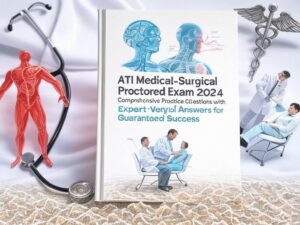


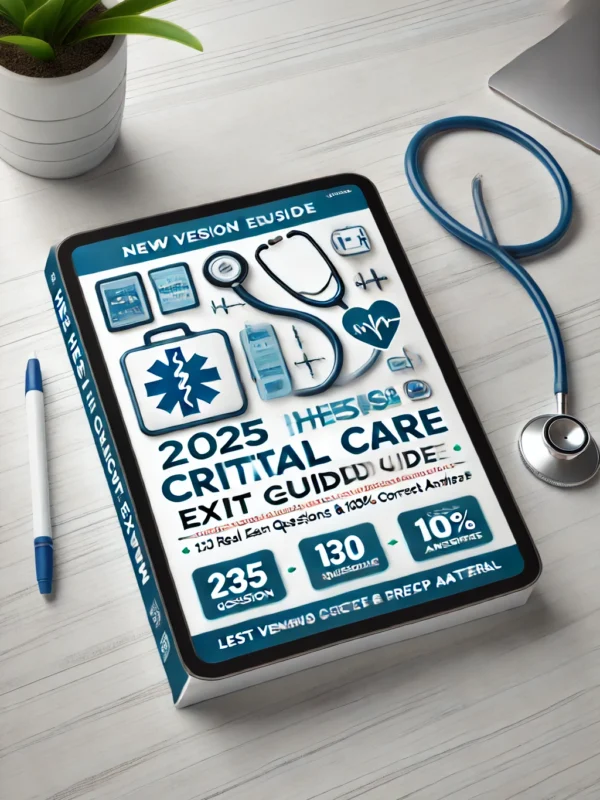
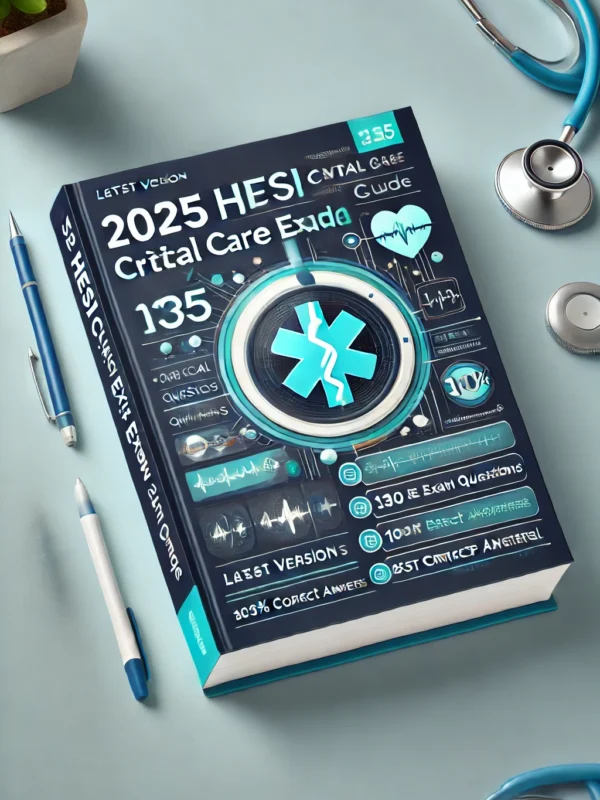
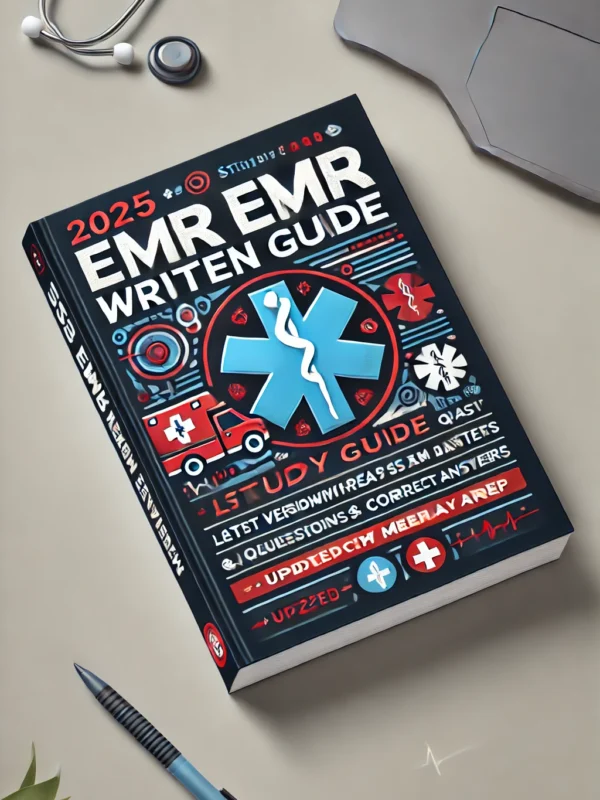

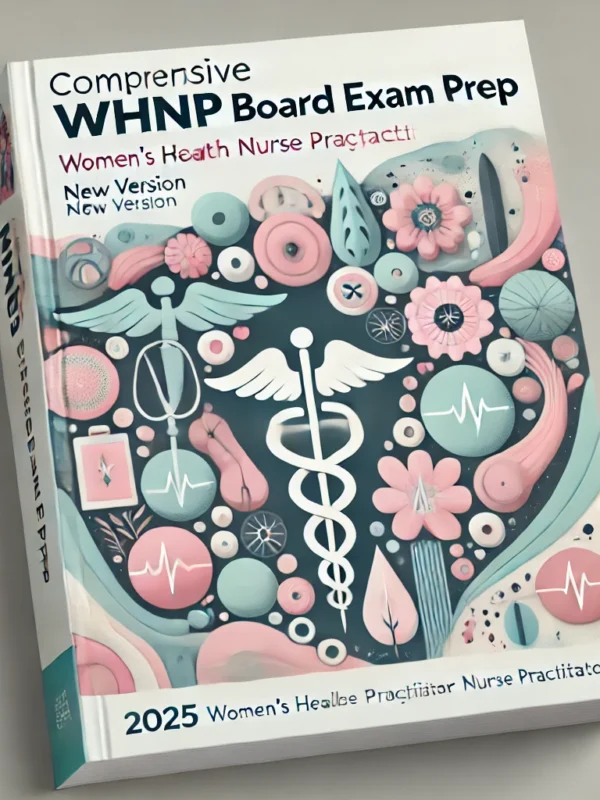
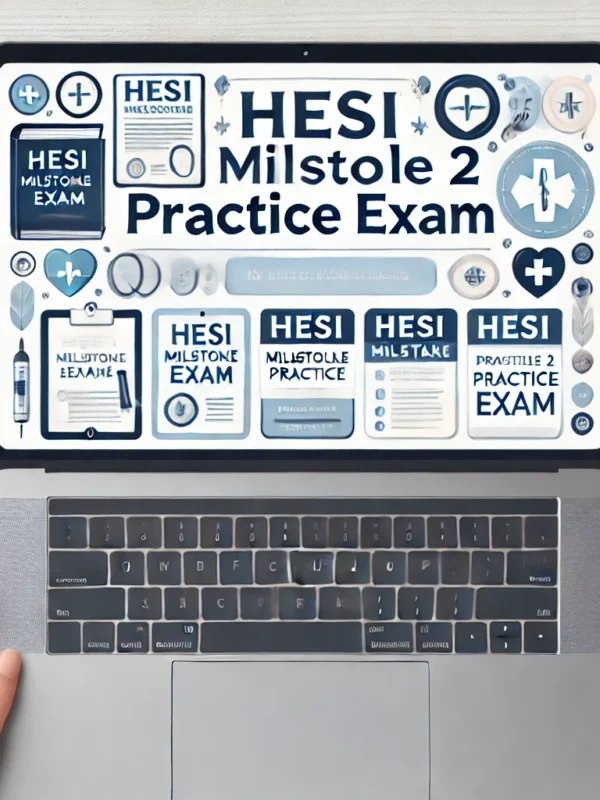
Reviews
There are no reviews yet.